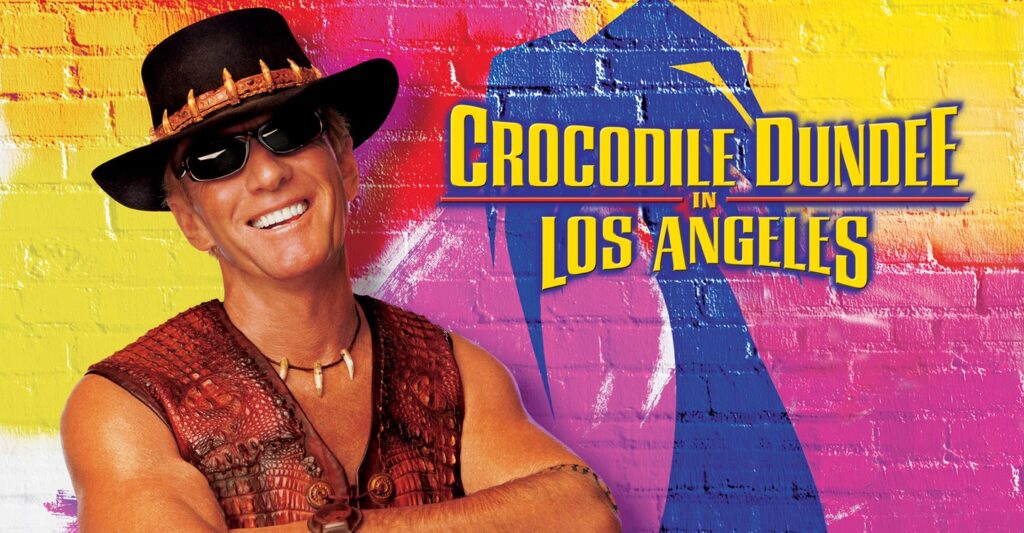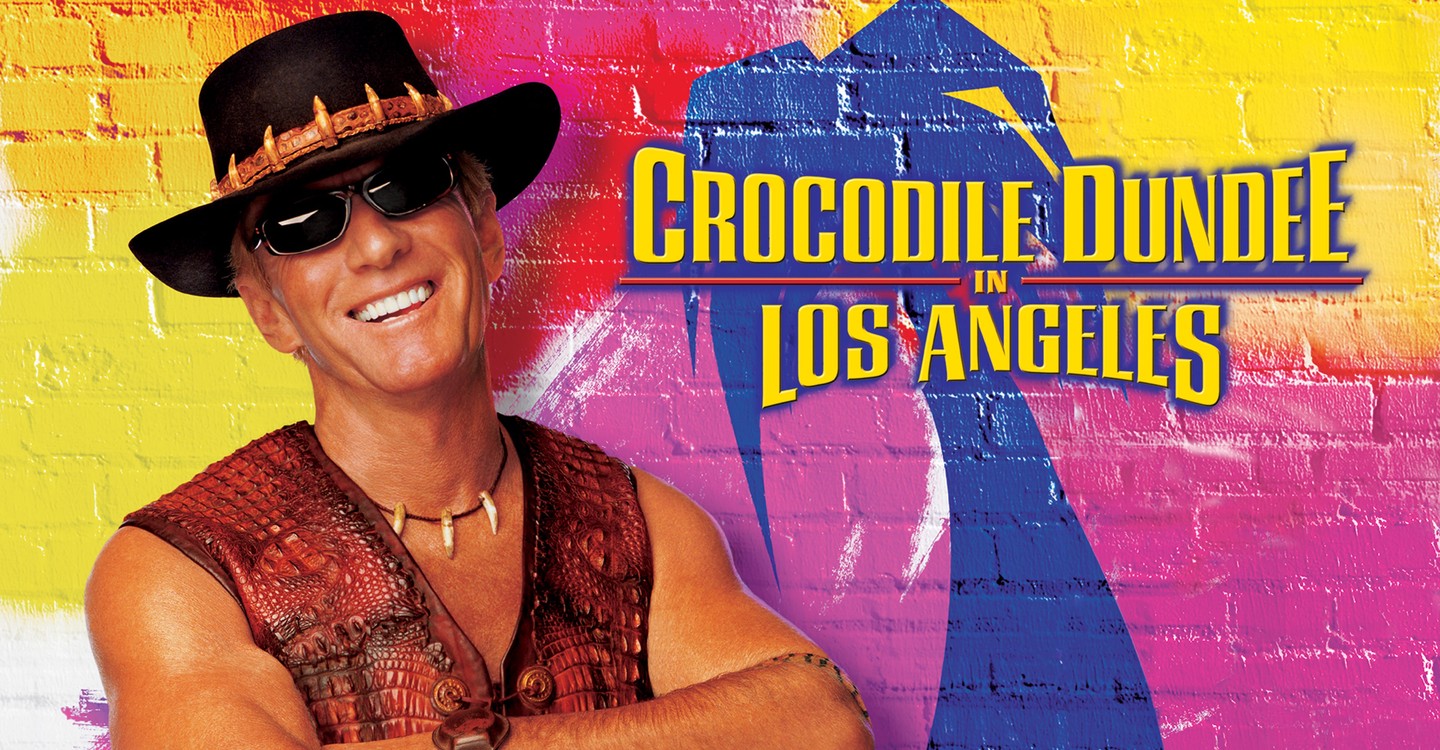
Crocodile Dundee In Los Angeles: A Deep Dive into the Outback’s Hollywood Adventure
Crocodile Dundee In Los Angeles, the third installment in the beloved Crocodile Dundee series, brought the iconic Australian bushman, Michael “Crocodile” Dundee, to the glitz and glamour of Hollywood. Released in 2001, the film aimed to recapture the charm and fish-out-of-water humor that made the original movies so successful. This article explores the plot, reception, and legacy of Crocodile Dundee In Los Angeles, examining why it holds a unique place in the franchise.
The Plot Thickens: Dundee Goes Hollywood
The story begins with Mick Dundee (Paul Hogan) living a simple life in the Australian Outback with his son, Mikey (Serge Cockburn). Their tranquil existence is disrupted when Mick’s partner, an investigative reporter, is called to Los Angeles to investigate suspicious activities at a film studio. When she needs Mick to look after Mikey, they both find themselves thrust into the heart of Hollywood.
In Los Angeles, Mick quickly discovers that the film studio isn’t as innocent as it seems. He becomes entangled in a web of deceit, corruption, and potentially dangerous secrets. As he navigates the unfamiliar territory of Hollywood, Mick uses his Outback skills and instincts to uncover the truth, all while trying to keep Mikey out of harm’s way. The plot of Crocodile Dundee In Los Angeles involves uncovering a smuggling operation, which provides the central conflict and drives the narrative forward.
Cast and Characters: Familiar Faces and New Additions
Paul Hogan reprises his role as Michael “Crocodile” Dundee, bringing his signature wit and charm to the screen. Linda Kozlowski returns as Sue Charlton, Dundee’s American wife, though her role is somewhat reduced compared to the earlier films. Serge Cockburn joins the cast as Mikey Dundee, adding a new dynamic to the father-son relationship. The film also features supporting performances from actors such as Jere Burns, Jonathan Banks, and George Hamilton, who add to the comedic and dramatic elements of the story.
Paul Hogan as Michael “Crocodile” Dundee
Paul Hogan’s portrayal of Mick Dundee remains the heart and soul of the franchise. His ability to blend ruggedness with humor makes the character relatable and endearing. In Crocodile Dundee In Los Angeles, Hogan showcases Dundee’s adaptability as he confronts the challenges of a new environment.
Linda Kozlowski as Sue Charlton
While Linda Kozlowski’s role is smaller in this installment, her presence provides continuity with the previous films. Sue’s connection to Mick adds a layer of familiarity for longtime fans of the series. [See also: The Making of Crocodile Dundee]
Serge Cockburn as Mikey Dundee
Serge Cockburn’s portrayal of Mikey Dundee introduces a new element to the story. Mikey’s curiosity and eagerness to learn from his father create heartwarming moments and opportunities for comedic relief. The father-son dynamic is a key aspect of Crocodile Dundee In Los Angeles.
Reception and Critical Response
Crocodile Dundee In Los Angeles received mixed reviews from critics upon its release. While some praised Paul Hogan’s performance and the film’s lighthearted humor, others criticized the plot as being predictable and lacking the originality of the first two movies. Many reviewers felt that the fish-out-of-water premise had become stale, and the film failed to capture the magic of the original Crocodile Dundee.
Despite the mixed reviews, Crocodile Dundee In Los Angeles performed reasonably well at the box office. The film grossed over $25 million domestically, proving that there was still an audience for the Crocodile Dundee character. However, it fell short of the commercial success of the earlier films in the series. The film’s performance suggested that while the character still had appeal, the franchise may have run its course. The film’s success can be partially attributed to the nostalgia factor and the enduring popularity of Paul Hogan.
Themes and Humor: Outback vs. Hollywood
One of the central themes of Crocodile Dundee In Los Angeles is the clash between the rugged simplicity of the Australian Outback and the superficiality and extravagance of Hollywood. Mick Dundee’s down-to-earth nature and practical skills are juxtaposed against the artificiality and pretension of the film industry. This contrast provides much of the film’s humor, as Dundee navigates the absurdities of Hollywood with his characteristic wit and charm.
The humor in Crocodile Dundee In Los Angeles relies heavily on culture clash and situational comedy. Mick’s interactions with Hollywood executives, actors, and other industry professionals are often played for laughs, as he misunderstands their jargon and challenges their values. The film also incorporates physical comedy, as Dundee uses his Outback skills to solve problems and outsmart his adversaries. However, some critics found the humor to be repetitive and lacking the freshness of the original film. The film attempts to recreate the magic of the original Crocodile Dundee, but often falls short.
Legacy and Impact on the Franchise
Crocodile Dundee In Los Angeles marked a significant turning point in the Crocodile Dundee franchise. While it was a commercial success, it also signaled the end of the original film series. The film’s mixed reception and declining box office returns led to a hiatus in the franchise for several years. Despite this, the Crocodile Dundee character has remained a cultural icon, and the original films continue to be popular with audiences around the world. The film’s impact on the franchise is undeniable, even if it’s not always viewed in a positive light.
In recent years, there have been attempts to revive the Crocodile Dundee franchise. In 2018, a mock trailer for a new film, Dundee: The Son of a Legend Returns Home, went viral, generating excitement among fans. However, it was later revealed that the trailer was part of a marketing campaign for Tourism Australia. This campaign demonstrated the enduring appeal of the Crocodile Dundee character and the potential for future installments in the franchise. [See also: The Enduring Popularity of Crocodile Dundee]
Filming Locations and Production Details
Crocodile Dundee In Los Angeles was filmed on location in both Los Angeles and Australia. The film’s production team sought to capture the distinct environments of both locations, showcasing the contrast between the Outback and Hollywood. The Australian scenes were filmed in Queensland, while the Hollywood scenes were shot at various locations in Los Angeles, including film studios and iconic landmarks. The film’s production design aimed to create a visual representation of the cultural differences between the two worlds.
Los Angeles Locations
The Hollywood scenes in Crocodile Dundee In Los Angeles feature several recognizable locations, including film studios, movie sets, and famous landmarks. These locations add to the film’s sense of authenticity and provide a backdrop for the comedic interactions between Mick Dundee and the Hollywood elite. The film’s use of Los Angeles locations helps to immerse the audience in the world of the story.
Australian Outback Scenes
The Australian Outback scenes in Crocodile Dundee In Los Angeles provide a visual contrast to the glitz and glamour of Hollywood. These scenes showcase the rugged beauty of the Australian landscape and highlight Mick Dundee’s connection to his homeland. The film’s use of Outback locations helps to reinforce the character’s identity and values. The film contrasts sharply with the original Crocodile Dundee in terms of setting.
Behind the Scenes: Making of Crocodile Dundee In Los Angeles
The making of Crocodile Dundee In Los Angeles involved a collaborative effort between the cast, crew, and production team. Paul Hogan played a key role in the film’s development, serving as both the star and a producer. The film’s director, Simon Wincer, worked closely with Hogan to bring his vision to the screen. The production team faced several challenges during filming, including logistical issues and creative differences. However, they were ultimately able to deliver a film that captured the spirit of the Crocodile Dundee franchise.
One of the key challenges in making Crocodile Dundee In Los Angeles was balancing the expectations of longtime fans with the need to introduce new elements to the story. The filmmakers sought to create a film that would appeal to both audiences familiar with the franchise and newcomers. This required careful consideration of the plot, characters, and humor. The film’s success in achieving this balance is debatable, but the effort was undoubtedly there. The film is a direct sequel to the original Crocodile Dundee movies.
Conclusion: A Hollywood Chapter in the Dundee Saga
Crocodile Dundee In Los Angeles may not be the most celebrated film in the Crocodile Dundee series, but it remains a significant chapter in the character’s story. The film’s exploration of the clash between the Outback and Hollywood provides a unique perspective on Mick Dundee’s character and his ability to adapt to new environments. While the film received mixed reviews, it remains a testament to the enduring appeal of the Crocodile Dundee character and the franchise’s impact on popular culture. Crocodile Dundee In Los Angeles provided a different take on the classic formula.
Ultimately, Crocodile Dundee In Los Angeles is a reminder of the power of humor, adventure, and the importance of staying true to oneself, even in the face of unfamiliar challenges. The film’s legacy is complex, but its place in the Crocodile Dundee canon is secure. The film tried to recapture the magic of the original Crocodile Dundee.

